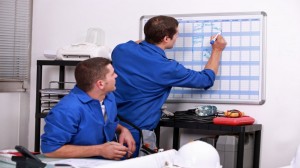Just noticed a funny sign on the Internet. I guess Safety comes first. Spelling…. Well I guess that is a close second or third.
Category Archives: Uncategorized
Eye Protection Safety Tips and Guidelines
Were you aware that each day the US there are more than 2000 eye injuries happening across the country? A lot of these accidents happen because of falling or flying objects, most of which are even smaller than a pin. You need to make sure you keep yourself safe whenever you work, so you would do well to keep a few things in mind as you go about your day. Most workplace injuries of this kind will happen whenever there is no need for safety eyewear or when its left to the individual workers to decide whether they need it or not. A lot of these injuries also happen due to poor cleaning practices in the workplace, especially when you’re handling dangerous chemicals. Cleaning services and professional cleaners in general will alleviate this type of issue up to a point, but vigilance is necessary in all situations regardless of that. The following checklist of tips will give you more information on what you can do to make accidents like that something easily avoided:
• Creating a safe environment
You will need to focus on minimizing hazards from falling or unstable objects by securing all areas against such possibilities. Make sure you have your tools and safety features in place and secure at all times. You should also always ensure people know how to use their tools safely and properly to avoid accidents, as well as never allowing bystanders inside hazardous areas at all times.
• Using workplace safety practices
You should always remember to shake, brush and vacuum all dust from hardhats, your forehead or your hair before you remove your protective eyewear. This will help protect your eyes from dust when you remove them. You should also work on cleaning your eyewear on a regular basis as well as never rubbing your eyes with dirty hands.
No matter how much you fight against such issues, sometimes accidents do happen and you need to focus on dealing with the accidents as they happen:
• Specks on the retina
You should never rub the eye that was affected, as this would only make the problem worse. Flush it with lots of clean water instead and see a doctor if your problems persist and the speck doesn’t wash out.
• Dealing with foreign objects, punctures and cuts
Unlike the previous example, you should avoid washing the affected eye as you may worsen the situation. Avoid trying to remove the object and look for medical attention as soon as possible, since you will be in need of delicate medical help.
• Dealing with chemical burns
Flush the eye with water or some other drinkable liquid as soon as possible and open the eye as widely as you can. Keep flushing for the next 15 minutes even as you look for medical help. If you work in a location that handles dangerous chemicals, chances are there will be an eyewash station you can use to do this.
Visit this website for more helpful info
Setting Up a Self Storage Business
People always need space to store their furniture and items for a variety of reasons, so a self storage business isn’t a bad idea. However, like any other type of business, there are a lot of things to consider before you finally go ahead and register your business. Here are some of the things that you’ll need to know and research beforehand.
1. Learn about tax
Any business needs to pay tax, but there are all kinds of rules and regulations surrounding this. Depending on which country/state you’re in, the rules may be different, which is why it’s so important that you research your individual location to find out more. Many businesses get a lot of tax relief because of business expenses, so if you’re not sure about this, talk to an accountant and see how things will work in terms of tax and expenses.
2. Do you need a license?
Certain types of businesses need a special type of license before they can start trading, and you might find that in your location, you need another type of license on top of the regular trading licenses which are available. Again, the best way to find out is to speak to an expert in your area who will be able to tell you more about what is required to set up a self storage business.
3. Research your competition
There are many self storage companies, such as safeselfstoragecalgary.ca, all over Canada and the USA, so it’s important that you find out which companies are the ones closest to you. Educating yourself about your competitors beforehand is excellent research for your business, since you can work out different ways to become a more appealing business than they are. When people choose a self storage business in the area, they’ll consider yours too, and if it’s better, they’ll undoubtedly choose it.
4. Keep it safe
One of the things which will attract new customers to your business is if it’s a safe place for them to keep their items. This is particularly true if your competitors don’t have a lot of security features. By installing extra security and safety features in your storage space, people will feel like it’s a lot safer to keep their furniture and goods with you. You can also charge a little bit more too, and people will pay the extra knowing that they’re getting added security.
5. Advertise
Don’t just advertise in your local area – advertise on the internet in as many different ways as possible. Use social networking websites to your advantage, and it might be worth hiring an online assistant to help you with the advertising of your new business if you’re too busy with other things.
Staying Safe at Work
Health and safety are two vital factors to any business. Part of an employer’s legal obligation is to ensure that the working environment is kept safe and free from hazards for both his employees and the general public. Nevertheless, workers themselves can certainly take steps in order to ensure their own safety in the workplace.
Here are some of the ways that workers can stay safe while at work.
1. Get trained.
Nowadays, companies are paying more attention to workplace safety, and have thus started to pair up with companies and organizations that provide safety training to their employees. These trainings help workers in being able to identify risks, avoid hazards, and know what to do should untoward incidents happen that lead to injury or illnesses.
One of the leading occupational hazards, asbestos exposure, can be prevented by being informed. Employers whose workers have a high risk of being exposed to asbestos on a daily basis need to provide equipment and facilities designed to protect workers from exposure to the harmful substance. Knowing how to prevent bringing the substance out of the workplace and into the home will help protect the workers’ family members from second-hand exposure as well.
2. When in doubt, ask.
The need to do well and show off at work may arise in certain individuals, especially when a promotion is on the line. However, it is important to remember that doing a job incorrectly may not only mean losing a job, it could also cost a life. When in doubt about how to do any work correctly, it is best to check with co-workers, or better yet, a supervisor. Having a supervisor watch and check that a job is done the right way should be a priority especially when the job carries risks to health or life. When in doubt, always ask the right people.
3. Speak up on concerns regarding safety.
Safety concerns should not be kept to oneself. Rather, these should be aired out in order to avoid any job-related accidents. If a certain task is too dangerous or difficult to be handled alone, letting the supervisors know is a logical first step. Safety concerns are not to be taken lightly, and it is everyone’s job to see to it that any work hazards are reported to the right people in authority so that something can be done to prevent any mishaps from happening.
4. Know the safety rules and regulations.
Orienting oneself regarding safety rules and regulations in the workplace should be on top of any worker’s list of things to do at work. Know the rules designed to keep everyone free from harm before starting any job. Personal protective equipment and tools are there for a reason, and they’re meant to provide a net of protections to the person wearing them. Falls are common in the construction industry, and this makes it all the more important for safety rules and procedures to be followed in order to avoid any accidents.
5. Know who to call.
Aside from getting trained on identifying risks and keeping safe, knowing who to call or report to during emergencies is imperative in ensuring that help arrives in a timely manner. Report all injuries, no matter how small or minor they may be, as well as any near misses. Accidents that may not have caused physical injuries would still need to be reported in order for the safety team to check working conditions and ensure that such accidents don’t happen again. Know who to turn to or call when accidents requiring medical assistance do occur.
6. Be alert.
Feeling tired when working can lead to mistakes being made, which may or may not be dangerous to one’s life. Getting plenty of rest before heading to work will keep the mind clear and alert all throughout the shift and possibly keep costly mistakes at bay. However, being alert while at work does not only mean being attentive to the task at hand. It also means keeping an eye on co-workers – especially those new to the team – and offering a hand when necessary.
At the end of the day, being safe in the workplace is the responsibility of everyone in the company. Everyone has their own roles to play in order to ensure that the workplace is safe and kept free from unnecessary risks and dangers. Following the safety tips above may mean the difference between a freak accident and a life saved.
Angie Cole (angiecoledv@gmail.com) is a content specialist for The Asbestos Institute in Phoenix, Arizona. This comprehensive training center seeks to educate and protect clients through a diverse group of classes and training seminars.
Protect Yourself with a Safety Workwear
Whether you are a mechanic, builder, regular worker or a handyman you need a workewear that will provide you with comfort and protection. The apparel should be created to last, without falling apart after several weeks. You can find everything on the market – from work clothing and footwear to accessories made from solid and high – quality materials. Since there are many options you should carefully decide what you need, depending on the type of work and the level of protection you require.
Materials
The material is what will distinguish the good workwear from the mediocre one. Usually the fabrics for workwear are more durable than the normal outwear and clothing. The material of the workwear will also determine the safety. There is high diversity that should fit a particular work environment and tasks.
• Cotton Duck
Cotton Duck is the most popular workwear material. This type of fabric is consisted by extremely durable woven canvas. It has smooth surface that is difficult to tear. Cotton duck is good at blocking the wind and it is resistant to high heat. Hot ashes and small sparks will not damage the clothing. It’s also light and comfortable material.
• Flannel
Flannel is typically made by 100% cotton. Because it’s medium – weight woven material, it’s good at protecting against the low temperatures. Flannel is frequently used to make long – sleeved shirts and flannel – lined jeans.
• Leather
The material is often used for accessories and footwear like boots, belts, jackets and working gloves. The most popular choices are deerskin, elk and full – grain cowhide and many more.
• Synthetics
Nylon and polyester are the most common materials. They are very durable and long – lasting.
Fit and Suitable
As mentioned earlier you need to pick your workwear according to the specific environment. For instance, the clothing that is appropriate for a mechanic will not be useful to a driver or a handyman. Different tasks and weather conditions require suitable workwear. Always purchase workwear that fits you. Baggy clothing might constitute danger while you are working. It doesn’t matter if you are dealing with home repairs or you are at your workplace. You need to feel comfortable and protected.
Safety Clothes
High – visibility apparel, waterproof and windproof wear are just a couple of things that you can pick. If you need to protect larger part of your body, consider buying an overall. Aprons are another way to ensure additional safety. PVC or fabric gloves are essential. If you are working with volatile ingredients, you should purchase a respirator. Face shields and goggles will keep you safe when mixing chemicals or spraying hazardous liquids.
Additional Protection
If you are working in windy, cold or snowy conditions, you might want your clothes with additional insulation. Built – in insulated linings are a popular way to ensure protection. Classic types of linings are blanket and flannel fabrics, quilted and fleece linings.
Don’t underestimate the comfort, flexibility and safety that the proper handyman workwear gives you.
Read more related tips on this website
How to Improve Your Company’s Safety Training
How to Improve Your Company’s Safety Training
Safety trainings, particularly the mandatory ones, can be quite boring. They are designed to help employees understand the necessary safety standards; only a very few of them involve team-building and other more fun subjects. It is difficult to deny the fact that boring safety trainings are less effective, simply because participants are not paying enough attention. In this article, we are going to discuss how safety trainings can be made more interesting – and effective – through the implementation of several simple tips.
Training Company with Experience
Working with the best safety training company is the first step towards making the training more effective. Experienced trainers such as iSafety available at http://isafety.ca knows exactly the challenges that they will be facing and how to overcome them.
The years of experience in conducting safety training courses give experienced training companies the edge they need to make your next safety training course that much more effective.
You will see topics being broken down to smaller chunks in order to make delivering them much easier to do. You will also be able to work with trainers with on-site experience. These seemingly simple factors do make a huge difference in determining whether the course is effective.
Practice and Simulations
You can only learn so much from lectures and reading the safety manuals. As part of the training course, participants must be involved in simulations in order for the training to be effective.
In a fire safety training course, for instance, doing thorough fire simulations will help participants develop not only the skills needed to deal with the situation, but also the instinctive ability to react should a similar situation occur in the future.
Simulations can also help keep participants interested. This is why most of the best training companies now design their programs to be filled with simulations and practices.
High Stakes Environment
This next tip may seem brutal at first, but it is a technique used effectively by many successful companies all around the world. This technique, named High Stakes Environment, takes simulations even further and put participants in a virtually high stakes environment.
I say virtually, because participants are actually in a very safe situation. What the trainers do is add cues that suggest they will be in real danger. For example, a trainer may ask participants to tape a “last message” video for their family before a simulation is conducted.
What the High Stakes Environment does is add two crucial factors that greatly increase the effectiveness of safety trainings: motivation and reassurance. The seemingly high stakes make people more motivated to complete the simulation safely and successfully. Once the simulation is completed, participants will feel reassured that they skills they’ve learned will safe them in the future.
The combination of these factors greatly enhances the impact of a safety training session. Participants who have been training under the High Stakes Environment circumstance are more likely to react correctly and rely on their skills when they face similar life-threatening or high stake situations in real life.
Improving Workers’ Safety Using High Security Lock Systems
Employee safety from occupational hazards is one of the major responsibilities of employers. Owing to this, organizations and workplaces worldwide have been trying continuously to improve workplace safety by providing safer work environment.
However, just like protection of employees from office-related health hazards is vital, crime prevention and ensuring their physical safety against outside violence are also significant and this can only be achieved by incorporating advanced and high security lock systems.
Workplace’s Vulnerability
Just like our homes are susceptible to crimes, offices aren’t any exception and the only way to prevent any delinquency or incident is to enhance security by replacing inferior and conventional locks with contemporary and advanced locks.
The crimes that could take place at workplace include theft of employee’s personal possessions and confidential office documents, and harm to employees by a mob or stranger and that’s easier when workplaces have insufficient lock and security system.
The Robust Lock Systems
Increase in criminal activities has created the necessity of having high-quality lock systems in offices. The lock systems that ensure employees’ safety in the most convenient manner have become the need of the time. Following are some protective locks that can provide employees a safer environment at work:
Access Control Systems
Installing access control system/s help organizations achieve extended security because of the multitasking nature of this technology. It is actually a comprehensive security solution that protects against theft, and prevents disruption in operations. This system detects one’s illicit access to critical areas and official documents and thus allows the workplace to prevent the embezzlement of official assets. Also, there are less chances of any harms to the employees from outsiders.
Additionally, this system eliminates the need of keys and keeps one away from frustration of misplacing or losing them. Furthermore, it supports card/badge system which makes it easier for the company to identify if person using the card or trying to gain access is the same person to whom the card was issued. In short, it allows visual verification. Moreover, it also keeps track of daily activities and actions of employees and indicates if they try to access unauthorized areas.
The access control systems therefore enable card management, video surveillance and 24/7 monitoring.
Emergency Lockouts
They come handy if you are trying to prohibit the entry of unauthorized personnel or criminals into a building. Thus, if some violence is taking place outside office, the workplace operations and functions remain undisturbed. It also enables monitoring of the main entrance keeping track of the activities taking place around a workplace.
Rekeying
If you are not using access control system, you might be using locks that are operated using keys, but are you sure if access to the lock is in your hand only?
There might be some unauthorized persons who intend to gain access to some confidential information or try to harass employees. There is also a possibility that they may have alternate keys of the lock. In this case, rekeying allows the lock owner to change the lock or alter it so that only new keys work on it. This way, no one else other than lock owner can gain access to the lock.
As much as it is important to have security guards, it is essential to secure the office, its assets and the workforce against outdoor threats and risks. Chariness of employees is also crucial when it comes to workplace safety, but high security lock systems facilitate them to continue working in a safer and stress-free environment.
Author Bio:
Follow Stephen roshy to get all the information regarding Locksmith. He is well known for his creative and informative writing. You can find him on Facebook , Twitter and Google+.
First Aid Sanitation Tips
First Aid Sanitation Tips
When you think of first aid you often think of small wounds, often ignoring the minor scrapes and cuts from smaller problems, those that don’t seem to have any lasting consequences in the long run. Regardless of that however, you would do well to have them cleaned and patched just in case. The following tips will give you an idea how to care for these minor wounds, not covering animal bites, burns and cuts that are too deep or severe. These will still require you to have proper medical help as you go:
• Cleaning wounds
This first step consists of disinfection and it happens to be a very crucial step in the process of tending wounds. You will need to focus on removing the dirt and debris that may have entered the wound, lodged within so you can cut the growth of bacteria on the exposed tissue. You can use a normal saline solution, which consists of a 0.9% water and salt solution to clean the wound safely. As a worst case scenario, you can also use clean tap water to clean the wound as well, cleaning the skin around the wound with care using unscented, mild soap. Antiseptics may not always work great with all such wounds, as they may slow down wound healing, depending on the situation. They may also cause pain during the cleanup process as well.
• Treatment phase
In many cases you would do well to apply antibiotics to the wound after you clean it before covering it. There are numerous products sold as ointments or creams that work their magic for this type of situation, preventing bacterial growth that may still be around the wound. These products will also prevent the dressing from adhering to the wound and forming painful dry crusts on top of it. They will also create an environment good for healing the wound itself. Quite a few of the products in question also have a anesthetic as part of the formula to relieve pain as well, which is a welcome addition for most patients.
• Protection phase
One of the best ways to ensure you have proper wound healing is to use a dressing to cover it completely until it is healed. This will not only help with the healing process, but it will easily protect the wound from contamination, which is essentially one of the greatest dangers it will face. There are plenty of dressings on the market, up to the point where you can enjoy ones with aesthetically pleasing prints on them. Easy to use, able to survive immersion in water without removal and available in so many varieties, dressings can come in any form or shape. Gauze, film, bandages, dressings, gauze and more will help protecting the wound. You would do well to remember that the bandages have to be changed on a regular basis if you want to have results in the long run. Never forget that or you may have complications with the wound you simply don’t need.
Read more tips at: http://www.cleaningcarpet.co/battersea-carpet-cleaning/battersea-carpet-cleaners-SW11.html
How to Cope with Emergencies
Emergencies are always unexpected but are a potential threat that can happen at any time. By definition, emergencies are events that can endanger one’s life and include fire, severe weather, floods, chemical spills, robberies, medical emergencies and other physical threats. These are all unforeseen events, which may occur accidentally, despite having proper prevention systems installed. A lot of them cannot be controlled directly, and may not even be caused by humans. Accidents like these are just a small example of what possible threats there are for work environments and preventing them and the bad outcome of one such unfortunate event should be top priority for any work safety system.
In order to provide best emergency response, any company must establish standards and rules that each and every employee should follow. In order to have the best outcome, it comes down to being prepared in order to avoid panic. This means that all personnel, from workers to people with proper office clearance to all areas and activities in a company must be familiar with safety and prevention procedures. Successfully responding to emergency situations requires few things:
– Establish emergency action plan. Accidents and threatening events are best handled by having an action plan. This includes and suggests exactly what all employees and employers should do in order to minimize risk for their lives, property and environment. A lot of businesses are required to have such plan established, but often times it is not a must. It is, however, a good idea to develop it, regardless of your business, to ensure that people know what to do in case a situation occurs.
– Emergency action plans should be developed by experts, but managers should be included as well. Anyone with enough clearance to access certain areas is under potential threat, and everyone in a company should be included. Employees should know what evacuation protocols to follow, what safety procedures to implement in order to avoid life threats.
– Assure that your building has proper means of detecting emergencies. This includes having the right fire detection system, security camera monitoring and other tools that will allow one to spot a potential emergency before it develops to a big threat.
– Buildings should have emergency exits. In addition to having safe routes and escape plans, any building should have sufficient equipment to help in dealing with emergencies.
– After an emergency, all workers and staff should be familiarized with follow-up procedures, such as reporting and identifying causes for the emergency, aiding the authorities and ensuring that proper waste removal and cleaning of the workplace is done, before entering the building again. Often times, professional waste removal service will be required.
– Often time emergencies will require medical assistance. Make sure that there is a trained person, who can offer assistance when it is needed. Additionally, make sure that you call the medical authorities as soon as possible. Make sure there is easy access to all areas of your building, as time is of the essence.
Developing such procedures is often times crucial for any business operation. Reducing the risk for employees and the factors that contribute to emergency situations should be a top priority for management.
The Importance of Surveillance in Workplace Safety
The use of surveillance cameras is on the rise. There could be many reasons why an employer chooses to install cameras in the workplace such as to monitor employee misconduct, protect company property and most importantly to ensure employee and workplace safety. The presence of CCTV and other surveillance systems are known to deter violence, theft, and other types of criminal activities. In a workplace with so many employees and activities taking place, keeping an eye on everything can be time consuming and near impossible. But since workplace safety is an integral part of every business, surveillance systems can do the work of making sure that the company and everyone working there is safe.
Surveillance Benefits in the Workplace
Crime Prevention
Among the best reasons for installing a CCTV system is to deter crime. In fact, studies show that the presence of cameras alone can deter crimes from happening. These cameras are highly noted for being effective especially in car parks. The area is a common target for different crimes that range from graffiti to vehicle theft. Most businesses can not afford the luxury of hiring security guards to keep watch on all areas. The use of a surveillance system is a practical solution. Having a deterrent to potential crimes can put employee’s minds at ease, knowing that they are being looked after.
Crime Resolution
Internal theft in the workplace is very difficult to identify and handle. But a surveillance system can monitor the staff and customers and can effectively prevent internal theft in the workplace. The resolution of workplace issues like sexual harassment, employee productivity and bullying can be abetted with the help of monitoring systems. However, it’s important to point out that while surveillance systems are useful in monitoring employees, for privacy issues – the devices should only be placed in public spaces and no audio should be recorded.
Workplace Safety
Providing employees with a safe and healthy working environment is among the main duties of an employer. Given this, a CCTV system could be a great support. A staff member who has to work overtime at night or has to walk to his car at night would feel safer knowing that any potential accidents will be captured. A company can also coordinate with a CCTV system and alarm monitoring companies for better surveillance and additional safety.
Summary
Even for small and medium sized businesses buying and installing a surveillance system should be a consideration. Security systems can be set up in all entrance and exit points of the workplace, staircases, the end of long corridors, lifts, front of washrooms, and canteen. This gives a better surveillance and with a control room in place with experienced staff to control the angel and aperture of the cameras, the entire workplace will be protected and safe. With the help of a surveillance system, employees can be more productive at work knowing that they are in a safe working environment.





